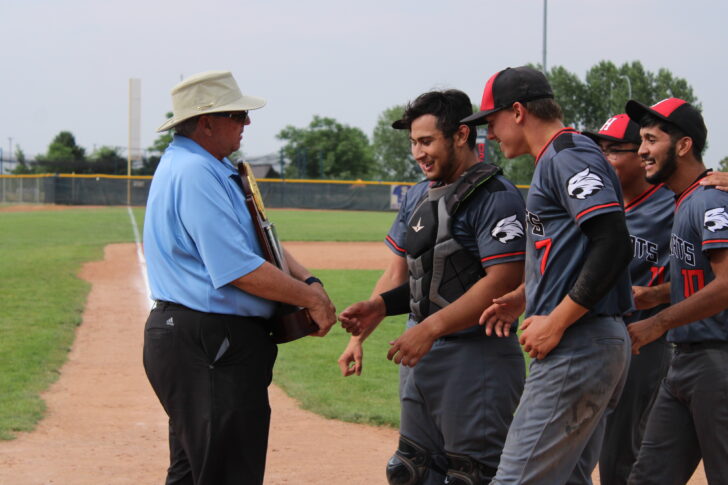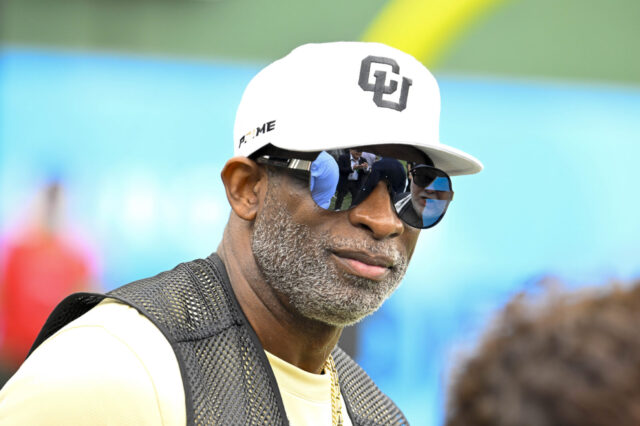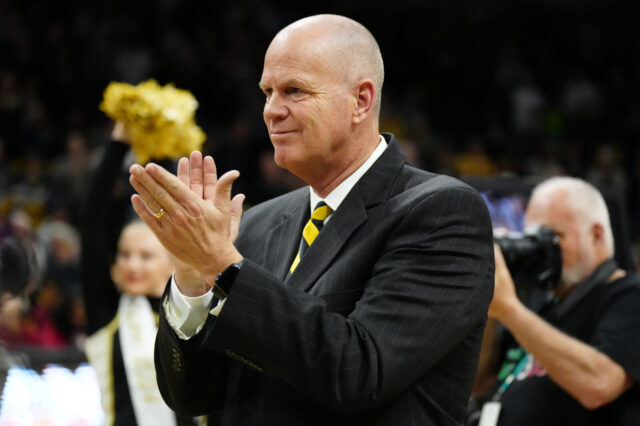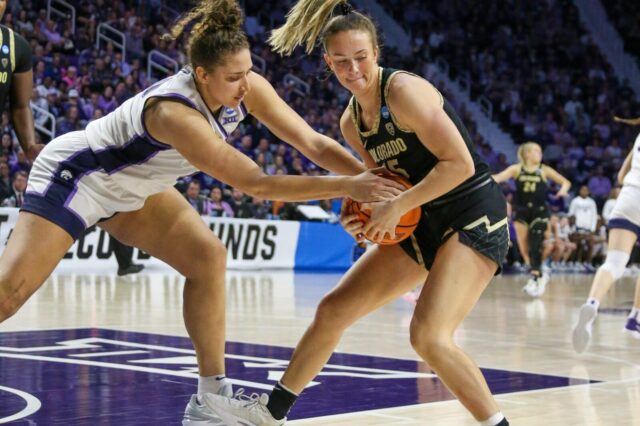Strike One: For 33 years he had the textbook definition of a “thankless job.”
But Bert Borgmann didn’t leave college sports for a job with the Colorado High School Activities Association seeking accolades or attention. He did it for all the right reasons.
Bert passed away last week from complications following a hospitalization. Just three days before he was scheduled to undergo surgery for a staph infection, he was on the phone with a friend talking about his eagerness to go home and get back to work on all those projects left undone prior to his retirement in the summer of 2021. He didn’t make it out of that surgery. He was 67.
Prior to his retirement, Bert was the person tasked with overseeing several CHSAA sports, including baseball. It was a gig that brought with it far more petty criticism – almost entirely from high school parents and coaches – than one person could ever deserve. Whenever something didn’t go right, or a rules infraction needed to be addressed, Bert got the phone call. When COVID shelved the 2020 baseball season, Bert fielded all the frustrated and angry calls (including several from me.) He always remained matter of fact, level-headed and calm. The health and welfare of the students was always and forever going to be the single thing he was focused on. Everything else was secondary.
Bert and I had been friends since our days working in the Sports Information office at Colorado State. He’d gone on to be the SID at Northern Colorado before he found his true calling at CHSAA. He helped me find mine in 2016.
As we sat in his office one fall afternoon, we began lamenting the overwhelming influence of “club” baseball on pitching arms, and I discovered the average age for Tommy John reconstructive elbow surgery was 15 years old. Think about that. Kids were getting operated on for something that was – and is – totally preventable at age 15.
I remember returning to the focus of our discussion at that point, the unchecked “club” baseball circuit where coaches could have kids throw 200 pitches in a single weekend if they wanted to. That, I contended, was where this problem lied. Overuse in the summer, fall and even winter (showcase) months.
While we agreed there was nothing CHSAA could do about club baseball, Bert said there was something he could do about what happened in the spring. We decided to make a video to put on CHSAA’s website about preventing overuse arm injuries. And while we hoped parents and club baseball coaches would watch, the target was the high schools coaches, an area Bert reminded me he could do something about.
Even before the video was posted on CHSAA’s website, Bert began the process of implementing a pitch count limit for high school baseball. A single pitcher could not throw more than 110 pitches in one day. There were (are) also mandatory rest days, etc. It was (and remains) a very solid plan designed to help these high school students stay healthy and able to participate.
After the new rule was announced – you guessed it – Bert got angry phone calls from numerous coaches. In pushing through a doctor recommended plan to help children avoid surgery during their high school years, he angered more than a few misguided adults.
That was Bert’s gig for more than three decades. And he never wavered.
After the video was finished he convinced me to get involved in high school coaching. I followed that advice and will be entering my seventh season as a high school baseball coach this March. The big difference will be that I won’t have Bert available on the other end of the phone to help make sure I’m doing things right.
Strike Two: On Jan. 24 we’ll find out if enough members of the Baseball Writers Association of America have done their homework, looked carefully at the overwhelming evidence and then cast their votes for Todd Helton to be inducted into baseball’s Hall of Fame.
It should be a slam dunk, but it won’t be. In fact, the odds are against Helton getting the required 75% of the votes cast to earn enshrinement in this, his fifth season of eligibility.
Helton has the numbers, or should we say, the “park adjusted” numbers. New analytics factor in ballpark elements, removing the advantages of playing at altitude along with the disadvantages of traveling to lower elevations. That should remove the “Ya, but he played half his games at Coors Field” nonsense. Helton ranks 15th all-time among first baseman in a system designed to grade overall performance. The 14 ahead of him are all enshrined, and at least eight ranked below him are too.
As Jayson Stark of the Athletic put it, “There are tools that do an excellent job in this day and age telling us what a player is, whether he plays at Coors Field, or Fenway Park or the Grand Canyon or wherever. Let’s just take the simplest metric there is, that accounts for park differential and everything else, and that’s OPS+. Todd Helton’s career OPS+ was 133. That means he was 33% better than the average player of his time – accounting for the park that he played in.”
Helton’s OPS+ is as good as Lou Gehrig, Willie McCovey, Fred McGriff, Jeff Bagwell and Albert Pujols, who just retired and isn’t eligible for the Hall yet. The rest are enshrined. They’re the only first basemen over the last two centuries to have numbers like that.
Still, if you want a reason why Helton’s overwhelming Hall of Fame resume won’t be good enough for induction, look to the east.
Out here in flyover country, in the “lost” Mountain time zone, we often lament the undeniable presence of the East Coast Bias. It’s real, it’s pervasive and it’s frustrating as all get out. And it’s particularly frustrating in this case, because Boston is indicative of that overall attitude.
Boston – the city and team that wanted to trade for Helton and make him the Red Sox first baseman back in 2007 (before the Rockies and Red Sox met in the World Series.) The place that made Trevor Story an offer he couldn’t refuse. That Boston. They stick their collective noses in the air when it comes to Helton’s Hall candidacy.
The six voting members of the Boston Globe newspaper cast 50% of their votes for Helton. That’s better than last season, but far short of what it should be. Columnist Dan Shaughnessy for instance, sent in his ballot with just one name on it, Jeff Kent.
The arrogance and ignorance is mind blowing.
It gets worse. Columnist Bill Ballou from nearby Worcester, MA cast his ballot and included each of the players remaining who had their candidacy stained by allegations of PED use. Yet he left Helton off. The message: “Steroids okay. Coors Field not.”
This is the kind of blind ignorance that will likely keep Todd Helton out of Cooperstown for at least another year.
There’s still hope of course. With about 40% of the ballots having been made public, Helton was coming in at just a tick under 80%. If that trend were to continue, “Mr. Rockie” would be in. Unfortunately, in previous years, the trend has been that votes that are not made public – those cast by voters who aren’t prepared to explain and defend their selections – are the ones that typically pull down almost every candidate. Call it the Curmudgeon Effect.
Eventually – perhaps next year – Helton will get voted in. For whatever reason, retired players’ careers seem to look better the longer we’ve been retired. It’s pretzel logic that makes about as much sense as not voting for Helton.
Strike Three: Without much fanfare (because we wouldn’t want to upset the do-go politicians who continue to promote all the “good” things they’ve done for the “poor, exploited college athletes” with NIL and the like) the NCAA (still trying their hardest not to get sued) has made an attempt to reel in college sports free agency.
It was announced last week that the NCAA’s governing body is going to stop allowing free, unfettered transferring. Due to COVID, the NCAA “relaxed” (abandon is a better word) it’s long standing rule that a player had to sit out a full season if he or she wanted to change schools. There have been “waivers” that athletes could apply for in order to be able to play right away, and they were often times granted – once. But after COVID, the limits were removed from those waiver applications, creating de facto college sports free agency. Numerous players have transferred multiple times, some – like QB J.T. Daniels – playing four seasons in four different uniforms.
Finally, the NCAA is going to put the clamps back on. Student-athletes will still be able to transfer once without penalty, but that’s it. Second and third transfers (without losing a year of eligibility) are off the table.
The timing of this is perfect for the University of Colorado football program.
The Buffs new Neon Deion 2023 football roster will feature a lot of new faces – like Sanders prize recruit Travis Henry – who are transferring in, having begun their college football careers at places like Jackson State. Most of these guys are not coming to play at CU, they’re coming to play for Deion. His brand is what drew them to Boulder.
Now they’ll be stuck.
Take Henry, for instance. If (when) Deion upped and moved to another school after the 2023 season ended, Henry would have been very likely to follow him – again. Under the previous (lack of) transfer “rules” he could have. Now he can’t. In other words, Henry and the rest of the players who have chosen to follow their pied piper to Boulder will have to remain Buffaloes after Deion leaves.
Sanders’ departure from Boulder, whether it’s after the coming season or the one after that, will happen. Under the old rules, Prime Time’s departure would have stripped the program of much of its roster. Under the new rules, damage control for the next CU coach is possible.





